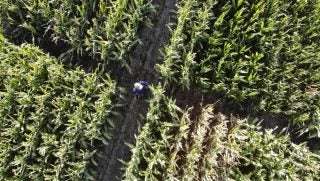This week, weather forecasters are predicting an extreme cold snap bringing arctic air down to many portions of the Midwest — in some areas it will be the coldest weather they have seen in two decades (there’s been talk of minus-25 degree temps, not counting any wind chill). For farmers and ranchers across the country, this means more than just adding an extra layer to walk out the door. They have livestock and machinery to take care of in order to continue daily activities. This is a tough time for ranchers, doing everything they can to keep the animals comfortable. Here are a few tips in order to keep the farm up and running in the extreme cold.
Livestock
Erin Larimore, MU Extension — Field Specialist in Livestock, had a few recommendations.
- Nutrient needs to increase in cold weather because animals are trying to maintain body temperature; have plenty of feed resources
- If calving during this weather, consider unrolling hay or straw to provide some warmth for newborns or move cows close to calving to shelter
- Check water tanks for freezing
- Block airflow in trailers if hauling livestock
Erin also suggested checking out this article over cold stress and beef cattle from Penn State.
Senior at South Dakota State University and Minnesota native, Victoria Pagel suggests keeping an extra eye on cattle during this time, especially if they are due soon. “We don’t have a very big operation, but we make sure the cattle have access to the barns and put down fresh straw or put new cornstalk bales out. We make sure they always have access to hay. Regularly check water tanks to make sure they aren’t froze over, though we use water heaters in the tanks. We don’t have calves being born this time of year anymore but when we did we’d keep an eye on due dates and try to keep them locked up in the barn so they would be ready to go into calving pens.”
New Jersey’s Department of Agriculture has a tips sheet that addresses livestock and extreme cold. It notes that:
- some cold and wet weather fronts may result in a 100 percent increase in energy requirements to help animals maintain normal body temperature and function. The nutritional needs of gestating livestock increase during cold temperatures.
- increased time spent indoors will increase the amount of soiled bedding material needing removal. Keep bedding as dry and clean as possible in order to avoid increased ammonia fumes which can irritate the respiratory lining of livestock thereby increasing susceptibility to pneumonia causing bacteria and viruses.
- extremities that become wet or are normally damp are particularly subject to frostbite and freezing during sub-zero weather. Livestock may lose or have damaged ears and/or tails. Male livestock may suffer cold damage to reproductive organs, which can impair fertility or the animal’s ability to breed.
- small animals such as rabbits and poultry as well as very young and old livestock may need supplemental heat and/or protection. Monitor their status often.
Machinery
Even though most people only consider prepping livestock, you can’t neglect the necessary machinery needed for daily use either. Andrew Hulshof at A + J Farms also recommended keeping equipment in top shape for reliability during the extreme cold.
- Put equipment you know you will be using inside somewhere or plug up the block heaters
- Add extra fuel stabilizer to any machinery you will need in the cold
- Check antifreeze in all the motors
- Winterize sprayers
- Make sure garden hoses are unhooked
Humans
Don’t forget about you and your loved ones! We know not everyone has the luxury of staying inside when the weather drops below zero. Don’t take this cold snap lightly — layer up to make sure you are prepared to do the chores. Even check on your neighbors, especially the ones who don’t need to be out in extreme temperatures. We want everyone to stay safe this next week as mother nature enjoys the Frozen soundtrack.



